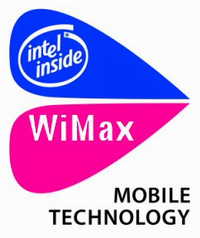Apple walks on water and WiMax Mobile


A Friday afternoon ValleyWag post riffed on sightings of Apple's banners at Moscone Center in San Francisco reading "There's something in the air." Their take is that WiMax support will be added to the heavily-rumored ultraportable MacBook as well as the rest of the MacBook Pro line.
Now, my guess is that the article meant to say was that Apple might add support for WiMax Mobile, or 802.16e, to its notebooks. This makes a lot of sense.
Intel announced its intent to ship a combo WiMax Mobile chipset in 2006, which would support current 802.11 Wi-Fi networks as well as the faster WiMac Mobile connections. At the fall Intel Developers Forum, the company said that a number of major system vendors would support for this multiband chipset, including Lenovo and Toshiba.
Of course, Apple wasn't among them. It never pre-announces products or technology adoptions. But Apple might want to get a bit of a jump on the competition and ship such a product, as it did with the first Core Duo machines. So, the "something" in the Macworld banners could be WiMax.
According to analysts, Intel has poured something north of $1 billion to develop and promote WiMax technology. So, the company has good reasons to encourage Apple to adopt the chipset.
Then again, that "something" on the banners could simply be the next round in Apple's switcher media campaign, describing the company itself, or the Macintosh. Is Vista in the air? Springtime? Nope, it's the whiff of a Mac running that sweet Mac OS X. Home cookin'.
Read Jason O'Grady's take on the banners.
However, the ValleyWag article went deeper into uncharted waters.
[Apple's support] would be a huge win for WiMax, which suffered a blow when Sprint and Clearwire abandoned plans for a WiMax joint venture. But Apple has proven it can popularize technologies -- think USB in the original iMac, and Wi-Fi in the iBook -- even with a scant market share. If anything, its position is stronger now than ever before.
No doubt, Apple's iMac and iBook teams are pleased to accept credit for having popularized, or saved, the USB and Wi-Fi standards, respectively. While those kind words will bring smiles to the branding team down in Cupertino, it must rub the hackles of engineers around the world.
USB long ago was developed by Intel, and while the connector shipped on the original iMac G3 in August, 1998, the standard was already adopted by PC vendors.
It's true that the PC market was slow to adopt USB. The holdup was twofold: support for the technology was problematic in the first rev of Windows 98, which shipped in June, 1998; and the PC installed base had plenty of inexpensive PS/2 keyboards. Cost is and always has been king in the PC market and USB devices cost more back then.
So Apple didn't save USB or really popularize it. The Macintosh rode the USB wave. If anything, the big boost to widespread USB adoption came with Microsoft's fixes in Windows 98 SE released in 1999.
Perhaps a case can be made for Apple's popularizing Wi-Fi. Maybe. The 802.11b wireless networking standards pre-existed Apple's 1999 announcement of Airport in the iBook, and cards and access points were available from a number of vendors.
Apple's genius was bringing a solution to the consumer market rather than focusing on the enterprise (as had been the case in the PC market), providing its usual excellent level of integration in hardware and software, and offering customers a easy-to-setup wireless router.
Intel pushed 802.11a instead of Wi-Fi for a while that confused the market. But the integration of Wi-Fi by PC notebook makers and Windows drove the market and lowered prices.
In fact, Apple's adoption of USB and Wi-fi are examples of a strategy to support industry standards rather than Apple's historical preference for home-grown connectors and standards. When the iMac G3 shipped with only USB and Ethernet ports, it heralded the company's abandonment of the long-standing Apple Desktop Bus connector.
There's only one interface that comes close to the claim of being popularized and saved with support from Apple: 1394, a.k.a. FireWire. Of course, this standard was invented at Apple and then given over to an trade association to further its development. It's still standard on Apple's computer line, even the new Xserves. although now missing from the iPod.
Can Apple prop up a standard? The company hopes so. We will the proof over the course of this year with progress towards industry-wide support for Webkit, the Web browser engine used by Safari in Mac OS X and on the iPhone.
Then again, it may be that the real propping up of WebKit in the future will come from Google rather than Apple. According to reports, Google's Android Mobile Platform will use WebKit's rendering engine.